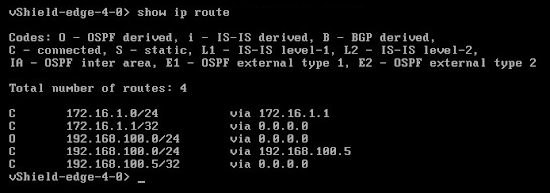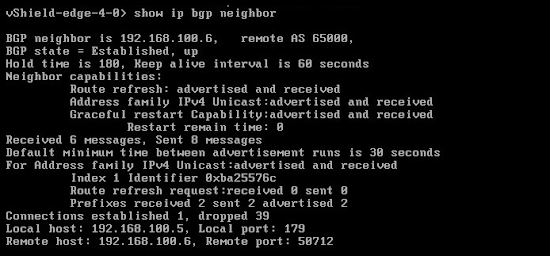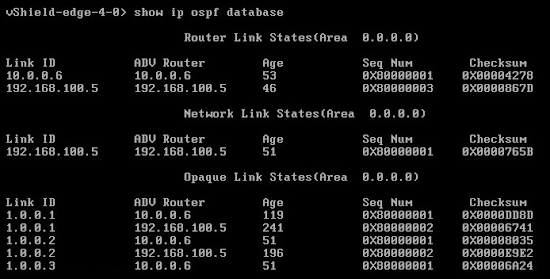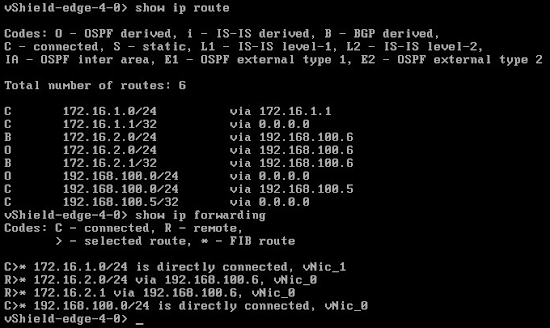Routing Protocols on NSX Edge Services Router
VMware gave me early access to NSX hands-on lab a few days prior to VMworld 2013. The lab was meant to demonstrate the basics of NSX, from VXLAN encapsulation to cross-subnet flooding, but I quickly veered off the beaten path and started playing with routing protocols in NSX Edge appliances.
I won’t bore you with the configuration process. Let’s just say that I got mightily annoyed with the mandatory mouse chasing skills, confirmed every single CLI-versus-GUI prejudice I ever got, but nonetheless managed to get OSPF and BGP running on an NSX Edge appliance. Here’s what I configured:
- OSPF routing process with area 0 on the external interface and route redistribution of connected routes into OSPF;
- BGP routing process with an IBGP neighbor and route redistribution of connected routes into BGP.
The fun started after I managed to log into the appliance console. You might find this printout familiar ;)
How about this one?
Here’s another one to warm your heart:
As you can see, they still have plenty of work to do (example: the subnet length is missing in the BGP table printout), but the code is still a few months from being shipped, so I’m positive they’ll fix the obvious gotchas in the meantime.
Moving beyond a single appliance
Time to deploy the second appliance to see whether all this fun stuff actually works (I couldn't add a physical router to a remote lab, could I?). Short summary: it does.
You can see an OSPF neighbor...
... and a BGP neighbor.
If you wish you can inspect the OSPF database:
NSX Edge OSPF process inserts some funky stuff into the OSPF database (you might want to check how that impacts other OSPF gear before deploying NSX Edge in production environment) and it seems type-5 LSAs are not displayed (probably a bug).
The BGP table has prefixes from both appliances...
...and the routing and forwarding tables look OK. The whole thing just might work outside of a lab environment.
The Grumpy Perspective
The addition of routing protocols to NSX Edge is a great next step toward implementing more dynamic networking infrastructure. Does that mean that I’d use NSX Edge as a router? You must be kidding – it’s a great edge device, with just enough features to integrate with the core routing functionality of your network.
Not unexpectedly, the configuration process really sucks. It takes forever to implement what one could do with 10 CLI commands ... but then you probably wouldn’t use NSX Manager GUI but API calls or PowerCLI to configure appliances in large-scale deployments.
Finally, does it make sense to run routing protocols on L4-7 appliances? If you ever spent hours debugging a static route pointing in a wrong direction you know the answer.









2 comments: